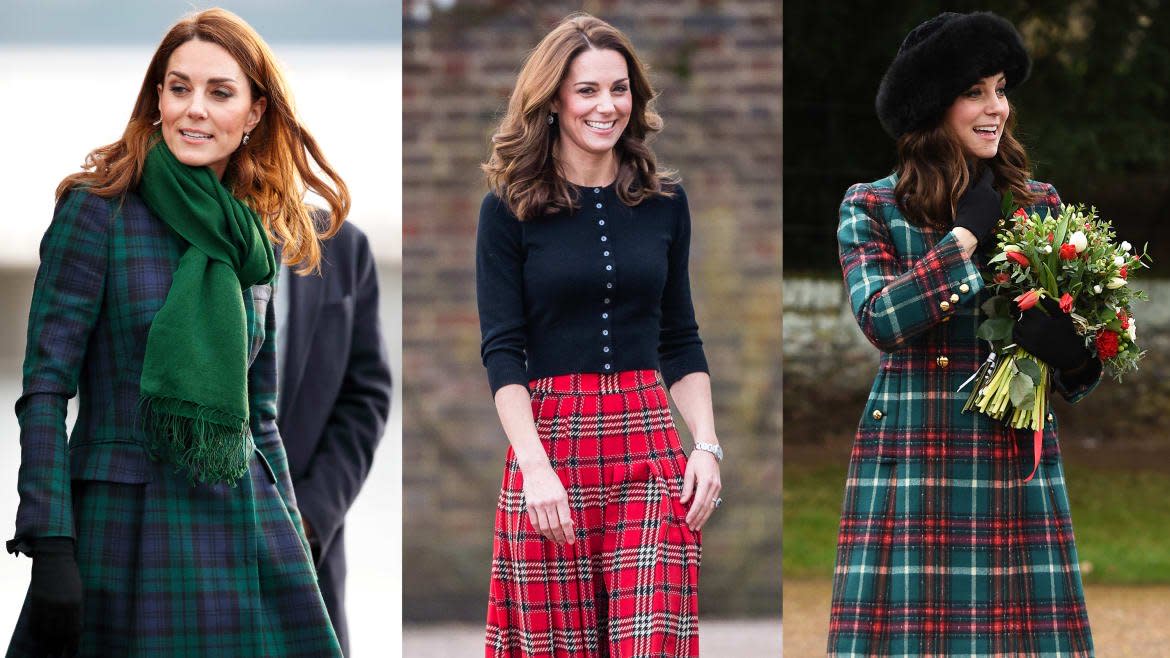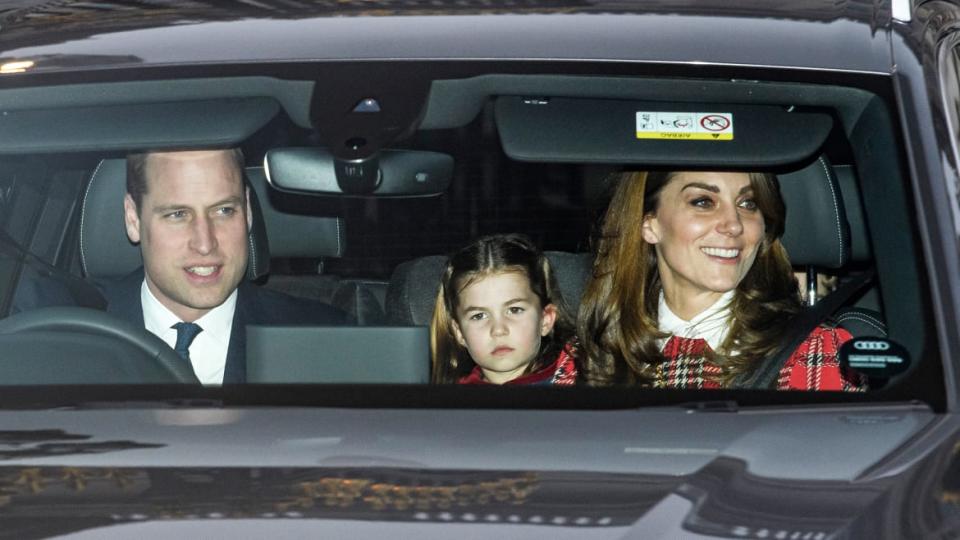Kate Middleton Loves Plaid. But Britain Once Banned the Print.

Every Christmas, the Queen hosts a private lunch. The annual event is one of the unsung joys of the holiday season because it is when British photographers put their camera zooms to good use, risking everything to get blurry shots of the royal family sitting in cars.
This year, one pap caught a glimpse of Kate Middleton gamely smiling. We only got to glimpse a few precious inches of the duchess’ outfit, but it can be confirmed, per Town and Country: Kate wore a festive plaid.
It’s not the first time Kate’s turned to the print. Her love of plaid has been dutifully documented since around 2008, when she and her flip phone stepped out in a checkered red mini skirt. According to Marie Claire, Kate’s affinity for the style has “grown over a decade,” and she regularly returns to it.
Kate Middleton Discovers Trousers—and a Fresh Sense of Style
She’s not the only one, of course. Though it can be worn year-round, plaid has become a winter staple, with thick wool skirts coming out of hibernation right as it begins to get cold.
Or ties, as the case may be for Democratic presidential candidate Tom Steyer, whose plaid tie has become somewhat of a campaign trail staple. It makes him look like less of a billionaire and more of a Classics professor at a liberal arts university. The camera sure loves it, as Thursday’s debate showed, which gave Steyer (and his plaid) ample screen time.
Regina King recently wore a pastel plaid suit to Diddy’s 50th birthday party, and the country singer Kacey Musgraves threw on a pink tuxedo coat with checks for the Variety Hitmakers Brunch earlier this month.
Black, red, and green prints signal tradition. Multicolored, larger patterns can be punk. Yellow plaid, of course, is reserved for Cher Horowitz from Clueless—or Halloween costumes exalting her.
Plaid is one of those ubiquitous, timeless styles that instantly communicates a feeling, persona, or socioeconomic status—often then to be subverted in new ways.

What is preppie becomes punk with the addition of heavy boots or a thick zipper. Wear plaid on a heavy fabric like flannel and you’re a lumberjack, but put on a thinner button-up with the same print and you look like you have a trust fund. Plaid has existed for so long, it can mean practically anything.
Specifically, plaid has existed since the fourth century B.C., according to Patricia George, an associate professor of Textile Development and Marketing at FIT.
“What we call plaid today is a woven fabric, made with two sets of yarns—one vertical and one horizontal,” George said. “What makes the colored grid that we call a plaid is that there are different yarn patterns in each direction.”
The word “plaid” is often used interchangeably with “tartan,” but George clarified that the latter is a specific pattern derived from Scotland, worn to signify allegiance with a particular clan.
“The head of each family had a registered tartan,” George said. “It’s the opposite of camouflage. Those were worn to identify someone on a battlefield, not to hide them on the battlefield.” At gatherings, tartans were a silent code on the social status of the wearer.
After the British defeated the Jacobins at the Battle of Culloden in 1746, the tartan was banned for over a hundred years, since it signified Scottish rebellion. But when King George IV visited the region in 1822 and became enamored with the design, he began a revival of the print, forever linking it with the British royal family.
In the 19th and 20th centuries, Scottish immigrants brought their plaids to America. According to George, the style born out of tribal affiliations became a popular print for universities and fraternity uniforms, to symbolize institutions as their own kind of clan. “It’s very easy for an organization or school to define a check as their check, even if they didn’t define it,” George said.
Even though houses like Burberry and Brooks Brothers created their own plaids, the print began to trickle down. “Depending on its fiber content and scale, plaid can fit into just about every level of society,” George said. “In shirting, wool or flannel means working class. But a beautiful, pima cotton plaid, that’s preppy.”
The British punk scene of the ’70s and ’80s found DIYers re-appropriating plaid, now associated with the upper crust and monarchy, to fit their own image. Designers like Vivienne Westwood dreamed up ways to subvert the stereotype, mixing prints on suits and ballgowns. “The punk use of plaid brings it down to a different social status, rebellion by taking the symbol of the class they were rebelling against,” George said.
Though plaid is still serious business for the super-rich and enthusiastically Scottish, the rest of us just plain like the look of it—especially around this time of year.
“When you have red and green plaid, too, that just screams Christmas,” George explained. “People just respond to color. When you wear some patterns like paisley, those get further into psychology. But plaid is just pure color. No label, no logo—unless you add one.”
Get our top stories in your inbox every day. Sign up now!
Daily Beast Membership: Beast Inside goes deeper on the stories that matter to you. Learn more.

